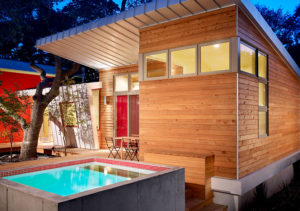What Is Rainscreen Cladding and Why Is It Important?

The term “rainscreen” has become a buzzword in the building materials industry. However, some misconceptions surround what a rainscreen system is, what it does and why it’s so critical in a cladding installation.

If you’re building in a region with high humidity or heavy rainfall, learning about rainscreen cladding and how to implement it effectively is crucial.
What Is Rainscreen Cladding
A rainscreen is an air gap between cladding and a building’s structure. It facilitates airflow, manages moisture, prevents water infiltration and promotes ventilation.
Properly implementing rainscreen cladding enhances the durability and performance of building exteriors, ensuring long-term structural integrity and minimizing maintenance requirements.
Closed vs. Open Systems
Rainscreen cladding systems come in two main types: closed and open.
Closed rainscreens are more popular in the Northeast, integrating the cladding seamlessly with no visible gap between the cladding.
Alternatively, open rainscreens feature a visible gap between the cladding, through which air and moisture can freely migrate through the building structure.

Both open and closed rainscreens are effective cladding solutions. Choosing between the two depends on various factors, including budget and the amount of rain or snow your region gets.
A closed rainscreen should work well in mild climates. However, for those living in more humid regions or areas prone to a lot of snowfall or debris (which can block the bottom area of ventilation), an open rainscreen is preferable. This option is usually more expensive upfront but can reduce your maintenance costs in the future.
Installing Rainscreen Cladding
Installing a rainscreen system is straightforward for any builder or contractor. Some installation methods use furring strips. While traditionally made of wood, plastic furring strips are also on the market, offering rot resistance and enabling multi-directional drainage.
An alternative to furring is using a rainscreen clip. These clips commonly have a ¾-inch standoff, which automatically creates the rainscreen without furring strips. In any case, the goal is a more rot-resistant wall assembly that enables drainage of wind-driven moisture and significantly enhances the life cycle of the cladding.
Why Is Rainscreen Cladding Important?
While rainscreen cladding is not required when building a home or commercial structure with wood cladding, it is an important addition worth considering for the following reasons.
It Shields Against Moisture
With traditional cladding, moisture can gather in the wall cavity, fostering mold growth and rot. Rainscreen cladding protects against weathering and environmental exposure by minimizing direct contact between cladding material and moisture-laden surfaces, prolonging the building exterior’s lifespan and reducing maintenance costs.
It Increases Energy Efficiency
The air gap created by rainscreen cladding buffers heat transfer between the exterior and interior of the building. This helps regulate indoor temperatures, enhances the comfort of those in the building, and promotes energy savings.
It Meets an Array of Design Needs
Rainscreen cladding offers architects and designers a wide range of materials, colors, textures and installation techniques, allowing for creative expression and alignment with diverse aesthetic objectives.
It Is Sustainable
By minimizing the environmental impact of moisture-related damage and optimizing energy performance, rainscreen systems support sustainable building practices, creating healthier and more resilient buildings.

Implement Effective Rainscreen Solutions With Russin
Carefully implementing rainscreen systems is an important aspect of contemporary construction practices, ensuring the long-term performance and integrity of commercial and residential buildings.
Fortunately, Russin’s Summit Rainscreen Cladding makes implementing a rainscreen easy. All rainscreen systems are milled and finished in-house for maximum control over your order.
Contact Russin today to create buildings that are not only aesthetically pleasing but also durable, sustainable and resilient to environmental challenges.

